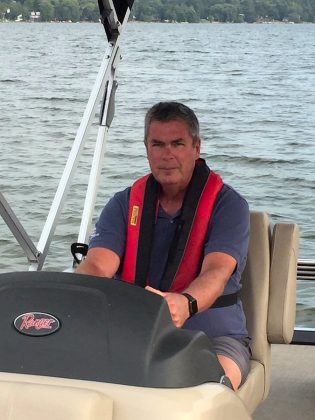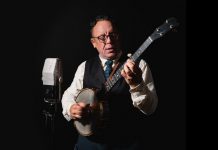
In a sink-or-swim world, the Peterborough Power and Sail Squadron, while hopeful we can do the latter, is hard at it ensure we never do the former.
Since 1959, the local unit of Canadian Power and Sail Squadrons has trained thousands of pleasure boaters in safe practices and knowledge of area waterways via a number of training courses.
Starting Monday, September 17th, “Boating 2: Beyond The Basics” will be offered anew, allowing holders of the required Pleasure Craft Operator’s Card to acquire new boating skills and/or brush up on skills that have long laid dormant. Course instruction is each Monday evening for six weeks through November 5th.
The course will be held at Adam Scott Collegiate and Vocational Institute (175 Langton St., Peterborough). The cost is $145 for squadron members ($165 for non-members) with registration available online at www.boatingcourses.ca/cities/Peterborough.
“This course that talks about navigation, safety, anchoring, lines, ropes, knots … it’s a little bit of everything,” explains Peterborough Power and Sail Squadron commander Nick Cliteur.

He says this is the third year Boating 2 has been offered, noting it evolved from the breaking up of a much more comprehensive course into two smaller courses.
Upon completing the Boating Two course — all pass, assures Cmdr. Cliteur — those interested can opt to take Boating 3, which focuses on marine navigation skills.
“We try to convince you that if you stick around for another six weeks, we’ll introduce you to charts and how to navigate, and how to get round safely using a compass, bearings and that sort of stuff,” Cmdr. Cliteur says.
“Some people are happy just taking the Boating 2 course, and then some say ‘Hey, that was so interesting, I’m sticking around for Boating 3.’ We average seven to 10 students in our courses and can accommodate a maximum of 20.
“The nice thing about that is we have seven to 10 instructors, people who have been on the water boating for years and years. It’s one-on-one. That’s why we know that by the time they’re finished the course, they will pass.”
All instructors are squadron members, Cmdr. Cliteur among them.
“We’re very fortunate to have some very talented people instructing. We have a guy who knows everything about anchors. He teaches that part. I’m pretty good with spring and fall lay-ups: how to get ready for the boating season and how to put things to bed. Trent-Severn (Waterway) always has a person come and join us just to talk about how to get through the locks.”

With the Peterborough Power and Sail Squadron set to mark its 60th anniversary next year — its charter was granted June 17, 1959 upon the passing of the basic piloting exam by 10 members of what was then the Peterborough Piloting Club — a number of outreach activities are being planned. Details will be posted on the squadron’s social media platforms as well as its website at www.peterboroughsafeboating.org.
According to Cmdr. Cliteur, one can look no further than the membership to explain the squadron’s track record of success.
“Every organization, including us, would love to increase membership but we’ve been very consistent,” he says.
“I’d love to find a way to meet and greet younger people and invite them to come and join us with their ideas. Whatever works for them, we’d love to get them involved. Everybody likes to do something, so we try and find out what those somethings are.”

“For the tenth year, we’ve gone out and dedicated a few hours at various locations and met other boaters and made sure their boats are safe as a free courtesy,” Cmdr. Cliteur says.
“It shows people the passion we have for boating and for boating safety. On August 25th, we’ll be meeting people at the locks in Buckhorn for the Rock The Locks event. It’s a chance for the people on my bridge to get out and answer questions and have a fun activity for three or four hours.
“We have some of the most enterprising members. We like to do more than just boat. During the winter months, when the boats are put to bed, we like to get out and do things like bowling or curling, just for a day or evening out.”

On a personal level, Cmdr. Cliteur is proud to join a long line of predecessors who have guided the squadron and kept it true to its mandate.
“I took an oath to promote boating safety, to support the members of the bridge, to support the membership in ensuring that everything that we can do to take our membership to the next level, by listening, being involved, and working with the national team,” he says.
“Recreational boating is as strong as ever. People are finding it a little more difficult to buy bigger units but, on the other hand, we’re seeing a huge increase in the number of people using personal watercraft. That’s as much a vessel as a 30 or 35-foot unit.
“We’re trying to figure out a way to reach out to those people to teach us how we can make it safer for them or give them information to stay safe out there. That is the one challenge we have. It’s critical that they understand the importance of being safe on the water and that we work together to ensure that.”

Canadian Power Squadron (CPS) was founded in Windsor in 1938 after a group of boaters travelled to the Detroit Power Squadron to take the United States Power Squadrons Coastal Navigation Course. Upon their successful completion of the course, they formed the Windsor Power Squadron. There are now 166 squadrons in all provinces and the Yukon Territory.
CPS was incorporated in 1947 and, in 1985, changed its name to Canadian Power and Sail Squadrons. At that time, the French name, Escadrilles canadiennes de plaisance, was formally adopted.


























